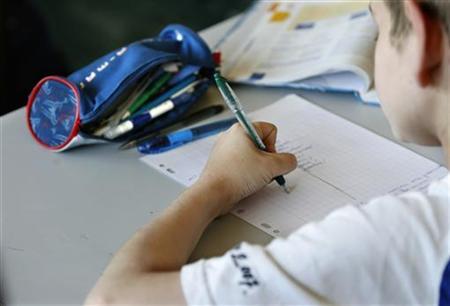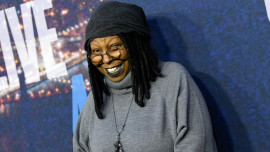
According to the Organisation for Economic Co-operation and Development (OECD), a major international think-tank, children must be taught about fake news in schools to stop them from turning towards extremism.
The OECD’s global tests will be adding a new category called “global competency” which is going to assess youngsters on how well they can think critically about information provided through social media and detect false claims.
The OECD’s global test is aimed at preventing students from being brainwashed into believing, for example, that they should travel to Syria to fight for Islamic State.
Interactive session: ‘Journalists need to study ethics at university’
This move is of great importance because governments around the world use these test results to inform policy.
“Social media is designed to create an echo chamber. We are likely to talk with people who are like us. Who think similarly to us. And that’s precisely, almost the antithesis, to global competency,” Andreas Schleicher, the OECD’s director of education and skills said.
He argued that schools have a role to play in making sure that young people have a chance to debate different views and opinions.
The five types of fake news
1) Intentionally deceptive
These are news stories created entirely to deceive readers, for example, the 2016 election was rife with examples claiming that “X celebrity has endorsed Donald Trump”, when that was not the case.
2) Jokes taken at face value
Humour sites such as the Onion or Daily Mash present fake stories to satirise the media. Issues arise when readers see the story out of context and start sharing.
Blasts and advisories: Rumours, fake news sow more fear among citizens
3) Large-scale hoaxes
Deceptions reported in good faith by reputable news sources. A recent example would be the story that the founder of Corona beer made everyone in his home village a millionaire in his will.
4) Slanted reporting of real facts
Selectively-chosen truthful elements of a story put together to serve an agenda. Example, the PR driven science or nutrition story such as “X thing you thought was unhealthy is actually good for you.”
5) Stories where the ‘truth’ is contentious
On issues where ideologies or opinions clash, for example, territorial conflicts – sometimes there is no established baseline for truth. Reporters may be perceived as unconsciously partisan.
Andreas Schleicher further said that he will announce OECD’s plans to test young people’s attitudes to different cultures, global issues, their critical and analytical skills and abilities to interact with others.
He added that today, anyone using social media or even news sites has to be able to assess, evaluate and reflect on the information they are given.
Whoopi Goldberg blasts fake news, threatens legal action
“Exposing fake news, even being aware that there is something like fake news, that you have to question, think critically. That is very important and this is something that we believe schools can do something about,” he concluded.
The new computer based “global competencies” tests will be taken by 15-year-olds around the world. The results of these assessments are seen as important by governments worldwide.
The test are due to be taken next year and the results will be published in 2019.



































































COMMENTS
Comments are moderated and generally will be posted if they are on-topic and not abusive.
For more information, please see our Comments FAQ